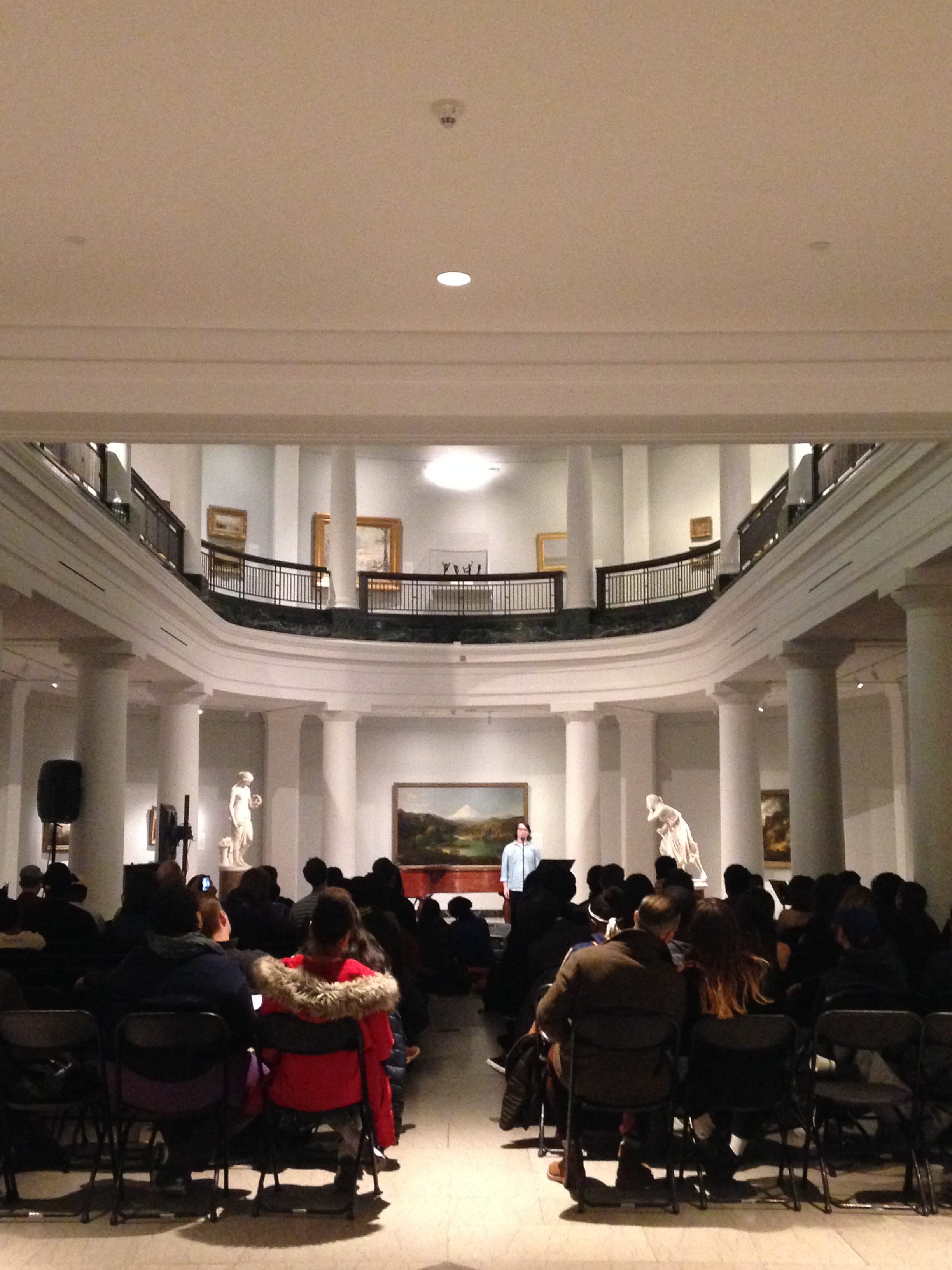I thought when I went to The Ark for Tuesday’s Milk Carton Kids show that I was getting a low-key acoustic show. I got that, but also so much more. At times funny, ridiculous, and bittersweet, The Milk Carton Kids and their opener Sammy Miller and the Congregation defied description in a concert I won’t be forgetting any time soon.
The name Sammy Miller and the Congregation sounds like a throwback to the Jazz Age, but theirs wasn’t a traditional jazz show. In fact, they told us, they were banned from the genre of jazz for reasons that were implied to be related to their production of a “jopera:” a jazz opera that eschewed any genre. The band incorporated theatrical elements, humor, and even a little pop music into their set. Their jopera was weird and wonderful, incorporating costumes, singing, and even a nonsensical storyline (an essential part of any opera). They engaged the audience, sometimes leaving stage and returning via the seats, as actors often do. I’m still not sure how to describe what I saw, but I know I was entertained.
The Milk Carton Kids, a duo consisting of Kenneth Pattengale and Joey Ryan, couldn’t have been more different in style and substance from their opener. Their sole instruments were two acoustic guitars. They wore suits and stood around one mic while they performed a set of mostly melancholy folk songs. But they, too, injected a surprising amount of humor into their set in their pre-song introductions.
At the beginning of the set, for instance, Kenneth confessed that he was watching the World Series on a device hidden in his bag (I don’t blame him). That joke recurred throughout, and there were times when Joey would start introducing a song and Kenneth would stand at the back of the stage, tuning his guitar and clearly peering into his bag. The whole audience was laughing at their intros, which were at turns funny, awkward, and self-effacing. It was an odd juxtaposition; it was almost as if they were performing a comedy show in between their folk concert.
The music itself was entertaining for very different reasons. I was impressed by the band’s harmonies, particularly on their slower songs. The intimate setup of The Ark and the songs’ sparse arrangements really brought out those harmonies. One song I particularly enjoyed was “I Only See the Moon,” a song from their upcoming album. Their penultimate song “Michigan” was also a highlight. Luckily, they were lying when they sang “Michigan’s in the rearview mirror” and came out for an encore.
I also enjoyed listening to the lyrics of the songs they played. Many were about traditional topics of contemporary folk, such as melancholy memories and places of the past, but others were political or even happy and upbeat. I allowed myself to sit back and get lost in the imagery of the lyrics, something that’s not possible at other types of concerts.
Though the Milk Carton Kids aren’t the kind of band I regularly listen to, and their concert wasn’t the kind of concert I usually attend, I was glad I went. The music was beautiful and the spoken interludes were entertaining. I’d never seen anything like this concert before, and I have a feeling I won’t ever again. But I’ll remember every bit: the humor and the harmonies, the beautiful and the weird.









